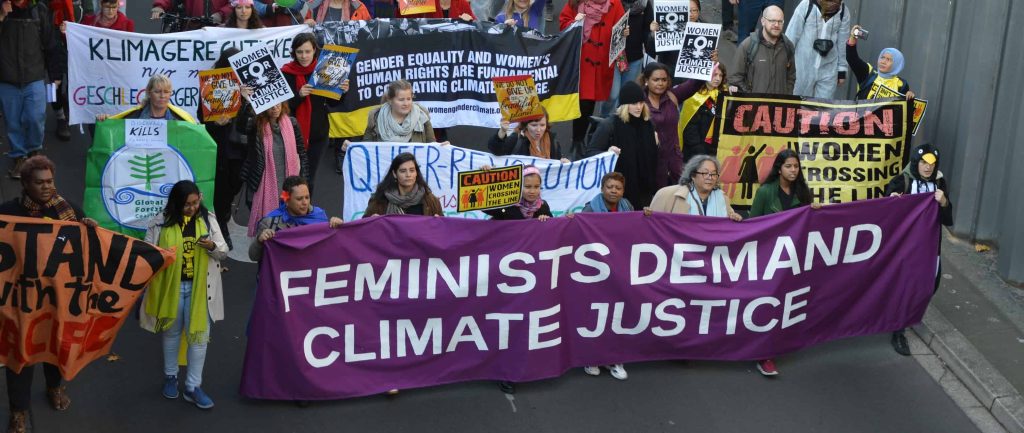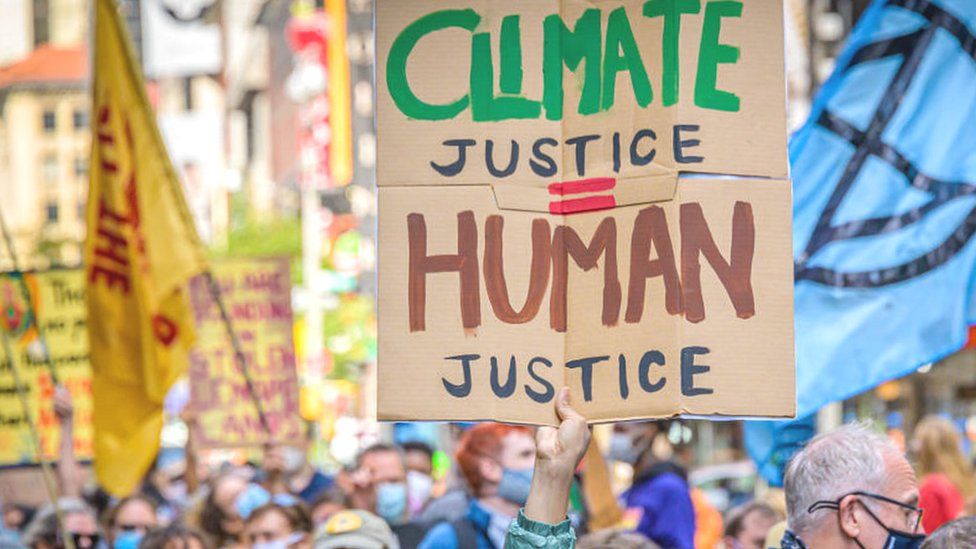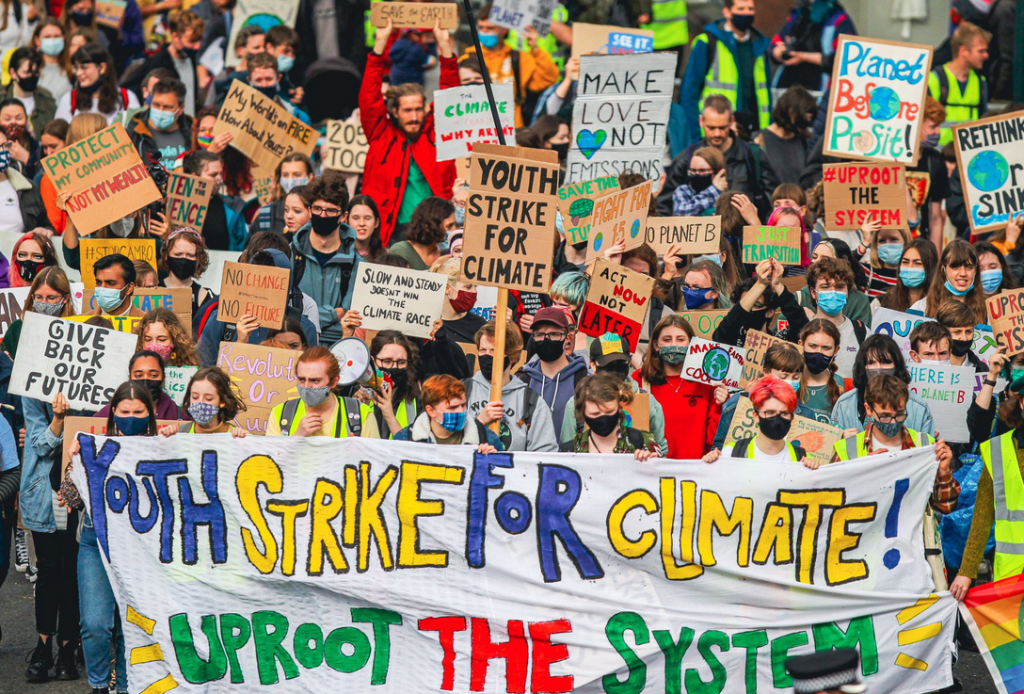People’s Perception of Climate Crisis
More people around the world think that world leaders and major companies are not doing enough to address and tackle the climate crisis. According to the POLITICO Morning Consult Global Sustainability Poll, adults in the US and around the world are generally frustrated with government leaders’ perceived inability to do enough to tackle the climate crisis. People show dissatisfaction with being left handling climate action alone, emphasizing the need for governments and large corporations, especially those with high carbon emissions, to take on more responsibility.
Also, The Pew Research Center conducted a survey in 2022 across 19 countries in North America, Europe, and the Asia-Pacific region to understand global perceptions of various threats and issues and the result of the survey was that three in four across 19 countries view the climate crisis as a major threat to their country. Concerns about climate crisis are especially high in Europe, where extreme weather events have occurred. Moreover, the duty of the UN was also opened to discussion in the survey and the majority of people, most of whom are young people, believe that the UN is an efficient tool in international cooperation.
Climate Crisis is not Gender Neutral
However, before I conclude this part, I would like to focus on the “gender” effect of the climate crisis and explain why as in everything, this issue is also not gender neutral. We have to be aware of the fact that gender equality and the climate crisis are interconnected.

Climate crisis’ effects are not gender-neutral; instead, they disproportionately affect women and girls and worsen already-existing gender inequalities. In areas where agriculture constitutes an important economic field, women are often more responsible for getting resources such as food, water, and fuel. Women face greater pressure during climate-related problems like droughts because they are the main suppliers and workers in the agricultural sector. As a result, some girls drop out of school to help with handling the additional duties.
In dangerous and conflict-affected environments, climate crisis operates as a “threat multiplier,” increasing social, political, and economic conflicts. These circumstances make women and girls particularly vulnerable to human trafficking, child marriage, as well as gender-based violence, among other forms of violence towards them. Following a disaster, women are more likely to suffer injuries, have a lower chance of survival, and have difficulty receiving aid, which makes them more vulnerable to similar events in the future.
Climate change places women’s and girls’ health at risk by limiting their access to healthcare and increasing the risks for the well-being of mothers and children. The risk to the health of pregnant mothers and babies is increased by the spread of transmitted by insects diseases, and extreme heat is associated with an increased likelihood of miscarriage.
As a concrete example for all of these claims I would like to mention a report which was published by the UN Population Fund (UNFPA) and Queen Mary University of London emphasizing that only a third of the 119 countries with climate crisis plans include sexual and reproductive health components. The study reveals that among these countries, only 38 address access to contraception, maternal, and newborn health services, and only 15 make references to violence against women.

Climate Justice Intersects with Human Rights
An important concept that emphasizes the moral and fair aspects of addressing the global climate crisis is climate justice. It emphasizes how unequally distributed the impacts of the climate crisis are, with communities that are marginalized and disadvantaged paying a disproportionate share of the cost. Addressing the climate crisis becomes an issue of social justice and human rights in addition to being an environmental issue. This issue arises from the realization that vulnerable groups, including indigenous peoples and low-income populations, are disproportionately affected by severe outcomes including extreme weather, rising sea levels, and food insecurity.
Furthermore, climate justice emphasizes the historical accountability of developed countries for greenhouse gas emissions, arguing that greater accountability for mitigation and adaptation measures must fall on those who contribute the most. The idea also emphasizes how crucial it is to guarantee fair access to resources, such as renewable energy and funding for adaptation, especially for marginalized populations. Human rights and climate justice are closely related because they both emphasize everyone’s right to live in a safe, healthy environment free from the consequences of the climate crisis. Furthermore, it acknowledges the interdependent nature of problems like class, gender, and race and the fact that marginalized groups frequently experience numerous forms of oppression.
Finally, climate justice advocates for international efforts to be guided by the values of justice and equity, as well as for international unity and collaboration in the collective fight against the climate crisis. In conclusion, implementing the principles of climate justice is crucial to a coherent and moral response to the climate crisis, which includes ensuring that the costs and rewards of reducing climate crisis are distributed fairly among all groups, especially the most marginalized.

Generational Differences in Regarding Climate Justice
In comparison with older adults, the Pew Research report investigates how involved various age groups are in climate action, with Millennials and Generation Z (Gen Z) being the most active. Younger adults are more engaged in climate-related activities than older adults are in traditional political activities like voting. When it comes to addressing the climate crisis, Gen Z and Millennials are more likely to have done this via volunteering, financial donations, participation in protests, or reaching out to politicians.
Younger adults also interact with climate-related content on social media more frequently and react to it emotionally, either with anger or worry over the lack of action. According to the survey, there are partisan differences in climate crisis activity, with Democrats being more involved than Republicans. In the last year, 24% of Americans have taken at least one climate-related action; Gen Z and Millennials have been the most active in regards to this. The study also looks at individual concerns people have about climate crisis, with more Democrats than Republicans expressing these issues.
Kaynakça:
Funk, C., Kennedy, B., & Hefferon, M. (2021, May 26). Climate engagement and activism. Pew Research Center. https://www.pewresearch.org/science/2021/05/26/climate-engagement-and-activism/
Crampton, L. (2022, February 8). Citizens and politicians combat climate change. Politico. https://www.politico.com/news/2022/02/08/citizens-politicians-combat-climate-change-00004590
Wike, R., & Fetterolf, J. (2022, August 31). Climate change remains top global threat across 19-country survey. Pew Research Center. https://www.pewresearch.org/global/2022/08/31/climate-change-remains-top-global-threat-across-19-country-survey/
UN Women. (2022, February 1). Explainer: How gender inequality and climate change are interconnected. UN Women. https://www.unwomen.org/en/news-stories/explainer/2022/02/explainer-how-gender-inequality-and-climate-change-are-interconnected
Ford, L. (2023, October 10). Climate crisis is not gender-neutral: UN calls for more policy focus on women. The Guardian. https://www.theguardian.com/global-development/2023/oct/10/climate-crisis-is-not-gender-neutral-un-calls-for-more-policy-focus-on-women

Bir yanıt yazın
Yorum yapabilmek için oturum açmalısınız.